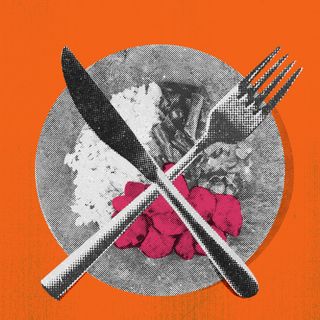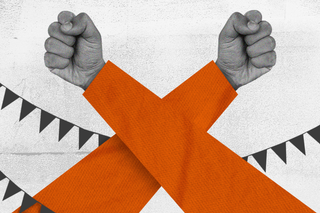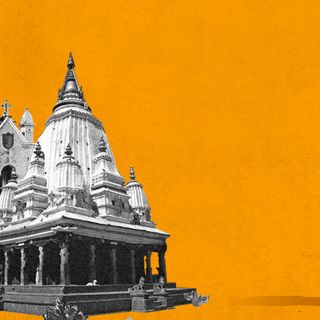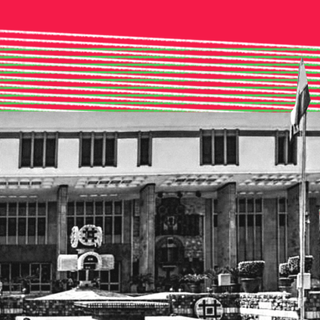
Why Religious Violence Forces Us to Reckon With Our Own Traditions
Celebrations have now become a project to assimilate more Hindus into the fold while demonizing others.

Asweltering Saturday evening broughtnews of the national capital being put on red alert. Parts of North-west Delhi’s Jahangirpuri reported sharp violence between two communities; the genesis being chalked up to communal slurs initiated by one against the other, according to some ground reports. Since then, three separate instances of riots have been triggered across different states — Uttarakhand, Andhra Pradesh, and Karnataka — where processions to mark the Hindu festival of Hanuman Jayanti were carried out.
There lies heavy unease in the political and social corridors. The most recent flare can be identified as the anti-Muslim hate speech by extreme Hindutva supporters during celebrations for Ram Navmi. Now, a religious festival has transformed into gory bloodshed, deaths, and displacement of communities already shouldering the burden of majoritarianbigotry.
Over the last few months, if not years, religious celebrations have morphed into amorphous projects to both assimilate more people into Hinduism while demonizing minority communities as the “other.” In this incendiary passage of hate, people must contend with how they perceive religious celebrations — and even celebrate them.
This is an important question to ask. Because in the pursuit of committing to a larger ideal and partaking in a wave of “festivities,” how complicit do people become in advancing targeted terror and hate?
Moreover, who stands to gain from ethnoreligious conflict? An instinctive answer — as sad as this reality maybe — is the cadre of politicians and leaders who feed on the polarization. There is ground evidence to support this too; a 2014 study showed the ruling BJP ended up performing better at polls after every riot. This is because riots produce ethnic polarization that benefits ethnoreligious parties. And had Congress lost all elections between 1962 and 2000, there would have been 10% more instances of violence in the country.
It is human instinct to protect and defend our ideals, especially when they bind us together as a community. “People are embraced or condemned according to their beliefs, so one function of the mind may be to hold beliefs that bring the belief-holder the greatest number of allies, protectors, or disciples, rather than beliefs that are most likely to be true,” as Harvard psychologist Steven Pinker put it.
As an all-consuming force, celebrations and traditions sit in a sacrosanct place of human belief. They cement individual and collective identity; give people a sense of purpose; bind people together in the pursuit of any ideology. These processions and marches indubitably are a display of people’s beliefs. And if this were a world where religion wasn’t a stepping field for violence, these blaring events would exist innocuously.
If is the operative word here.
Related on The Swaddle:
What Delhi’s Anti‑Muslim Chants Can Teach Us About ‘Ethnic Outbidding’
In the case of the Jahangirpur violence reported on Saturday, “the mob with members of the Bajrang Dal went outside the mosque and tried to wave the saffron flag there. They were also dancing to loud music,” according to a resident of the area. The violence at the yatra even prompted Bharatiya Janata Party politician Kapil Mishra — who is also linked with violence at the 2020Delhi riots — to say: “[Bangladeshi infiltrators] should be identified and their homes should be bulldozed.” During the Ram Navami celebrations last week, violence was reported across states; several processions involved people playing anti-Muslim music and making incendiary speeches.
In other words, what anchors some celebrations is blatant hatred for another community.
“Understanding the truth of a situation is important, but so is remaining part of a tribe. While these two desires often work well together, they occasionally come into conflict,” Pinker added. Let’s say people understand these events are being engineered to rouse people and threaten a community’s safety; they may still be unwilling to actively express their disagreement. In most cases, however, the instinct is to believe it is the other community who was wrong; the other community laid the call for arms and inflicted violence. It is no wonder that the violence on Saturday is reduced in the mediato a “they said-they said” narrative.
How we weave ourselves in the cultural fabric could then be understood psychologically as much as it is a product of our social ideals. This complicates our relationship with truth and violence in an increasingly polarizing climate.
The truth exists as an inconvenience today. The agenda-setting of celebrations, meant to uphold people’s ideals and respond to their desires, is transforming dynamically. It begs the question: what is the cost of our acceptance and participation in displays of hate?
Saumya Kalia is an Associate Editor at The Swaddle. Her journalism and writing explore issues of social justice, digital sub-cultures, media ecosystem, literature, and memory as they cut across socio-cultural periods. You can reach her at @Saumya_Kalia.
Related


Men Are Less Religious in Countries With More Gender Equality, Shows Study
